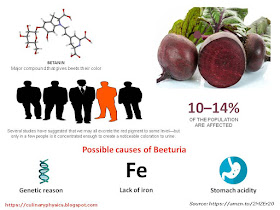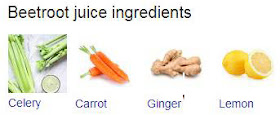😍 PREWORKOUT 😍 POSTWORKOUT 😍 GLUTEN FREE 😎 DAIRY FREE 😄 VEGAN
This is how to prepare beetroot juice fast using a blender, a juicer and a traditional juicing method.
If you are into Youtube videos, at the end of this article I embedded a video tutorial on “how to make beetroot juice without a juicer or blender” easily.
Nutrition supplement companies have formulated bestselling beet powders, concentrated juice shots and chewable soft supplements to sell to athletes. On the other hand, some scientist and vegan purists think you get the greatest benefit from consuming natural organic beets fresh from the ground.
What Does Beets Do to your Body?
Benefit of nitrous oxide. Beet juice is an athlete’s “performance- enhancing drug” because they have been clinically shown to increase oxygen and blood flow to the muscles, thus helping to increase athletic performance.Beets are low in calories and a great source of nutrients, including vitamin C, potassium, antioxidants, folate and fiber. Beets are naturally packed with nitrates and pigments that may help lower blood pressure, improve athletic performance and have anti-inflammatory benefit.
The body converts nitrates to nitric oxide, which aids with blood flow. Some elite athletes drink fresh beet juice before an intense workout or high-level competition.
Nitric oxide (nitrogen oxide or nitrogen monoxide) is a colorless gas with the formula NO. It is one of the primary oxides of nitrogen. Nitric oxide should not be confused with nitrous oxide (N2O), an anesthetic, or with nitrogen dioxide (NO2), a brown gas and foremost air pollutant.
About 2 cups (500 ml) of beet juice is the optimum amount to consume. Other good sources of natural nitrates are celery, Chinese cabbage, lettuce, radishes and spinach. Cooking reduces some of the nitrates, so eating the vegetables raw is best option.
How to Make Beetroot Juice with a Blender or Juicer?
Servings: For 2 awesome people
BEETROOT JUICE INGREDIENTS:
1 medium beet
1 carrot
¼ lemon, peeled
2 celery stalks
2 teaspoons (4 g) fresh ginger, chopped
PREPARATION PROCEDURE:
1) Wash the beets, carrot, and celery stalks well, removing any dried dirt or mud from their surface.
2) Cut the beets and carrots into quarters. You can save and use the greens as well or discard them.
3) How do you make beetroot juice using a blender? Juice all ingredients in a juicer, or place them in a high performance blender and blend until smooth.
4) How do you make beetroot juice using a juicer? Turn on the juicer and push the pieces of beet into it one at a time until you have the amount of juice you desire.
Blending Tips:
a) Add ½ cup (118 ml) water if using a blender.
b) For some nutritionist or dietician, blending is better than juicing because of high fiber content compared to juicing. In addition, blended drinks have more nutrients due to the inclusion of pulp, not just water content.
Other Health Related EASY Recipes:
Homemade Post Workout and Sports Recovery Drink Recipe - Sweet Potato Recipes
How to Make Bieler's Broth for Restoration and Cleansing?
Ultimate List of Foods to Boost Immunity Quickly
BEETROOT JUICE HEALTH FACTS
Can I Drink Beet Juice Everyday?
In some scientific studies, drinking about 2 cups of beet juice daily or taking nitrate capsules or powder lowered blood pressure in healthy adults. People who drank beet juice for 6 days had better stamina during intense exercise.What Happens if I Drink Carrot and Beetroot Juice Daily?
Benefits of beetroot juice and carrot juice: Beetroot juice and carrot juice makes for a great detoxifier due to the presence of betaine in beets that aids maintain healthy liver function. This juice helps improve blood flow as beets have high nitric oxide content.Carrot juice also helps expel toxins from the body effectively.
What is the Right Time to Drink Beetroot Juice?
Benefits of drinking beetroot juice first thing in the morning: My dietician and physician suggested that it is best to drink beetroot juice early morning or one hour before your breakfast. Drink at least 200 ml glass of beetroot juice every day to get all its benefits to your health.A benefit of drinking beetroot juice first thing in the morning is that it will help you start your day hydrated and set the tone for drinking plenty of fluids throughout the day.
How Long Does it Take for a Glass of Beet Juice to Lower Blood Pressure?
A cup of beet juice has approximately the same nitrate content as two whole medium-sized beets. The beet juice can decrease your blood pressure by about 10 millimeters of mercury (mm Hg). The peak drop occurring 3 to 6 hours after you drank the juice.Does Nitric Oxide Help Sexually or in Erectile Dysfunction?
Beet juice benefits: Nitric oxide in beets is beneficial for physical activity like having sex or masturbation. Nitric oxide supports the blood vessels and increase blood flow in your penis to prolong and harden you erection.Nitric oxide one of the most important molecules for penis blood vessel health and proper function. It is a vasodilator, meaning it relaxes the inner muscles of your penis blood vessels, causing the vessels to widen. Thus, nitric oxide increases blood flow in your penis and balls.
Are Beets Anti inflammatory?
Beets (Beetroot juice, beet juice) contain a nutrient called betaine, which has been revealed to decrease risk for inflammation.Is Beet Juice Good for Your Liver?
Beetroot juice has conventionally been used as a medication to stimulate liver enzymes and boost bile, which aids the liver's detox function.It is high in betalain and other compounds that have been shown to lessen inflammation in the liver. To protect against oxidative stress and reduce the risk of liver damage.
What are the Side Effects of Beet Juice? Why do Beets Turn Urine Red?
Side effects of beet juice. Drinking beetroot juice frequently can change the color of your urine and feces due to the natural pigments in beets. The compounds give beets their red color that can also result to red-colored urine.The unusual effect of beets is called “beeturia,” or a red coloration of urine or crap, after ingestion.
 |
| (click picture to ENLARGE) |
These color changes are temporary and not a reason for concern. This condition is not something that affects just anyone who eats beets. Does not affect all the people who consume beets.
The deep red appearance of beets is due to the existence of a group of compounds called betacyanins.
Another group of compounds present are the betaxanthins. These have a yellow color in isolation, and are present in lower concentrations than the betacyanins.
Betacyanins can cause beeturia because they do not break down in the digestive systems of some people. Some of the unmetabolized compound may stay in the colon and wind up giving the amusing effect of purple shit or piss.
It is possible that the breakdown of these compounds could also be influenced by genetic factors.
In another interesting assumption, beeturia has been potentially linked to being an early indicator of hemochromatosis (over accumulation of iron in the body).
How to Make Beetroot Juice Without a Juicer or Blender?
This is how to make beet juice for high blood pressure. This is the traditional preparation of beetroot juice at home before blender or electric juicer was invented.MATERIALS:
Grater
Bowl
Spoon
Plastic or rubber gloves
Ultra fine muslin cloths, Gauze or cotton cloth or fabric
TRADITIONAL JUICING METHOD:
1) Wash beets until free of dirt.
2) Grate the beets directly into the bowl. Use gloves to prevent hand discoloration. Grate the beets without peeling it. The finer you grate the beetroot, the more juice you will get.
3) Filter the grated beetroot using the ultra fine muslin cloths by squeezing it firmly.
Watch Video on how to prepare beetroot juice (4:43 minute long): How to Make Beetroot Juice Without a Juicer or Blender?
REFERENCES:
Andy Brunning. 2016. Why Does Asparagus Make Your Pee Smell?: Fascinating Food Trivia Explained with Science. Ulysses Press. ISBN-13: 978-1612435510. https://amzn.to/2QQgZoP
Tara Mardigan R.D. and Kate Weiler C.H.C. 2015. Real Fit Kitchen: Fuel Your Body, Improve Energy, and Increase Strength with Every Meal. Fair Winds Press. ISBN-13: 978-1592336906. https://amzn.to/2MZEr20





No comments:
Post a Comment